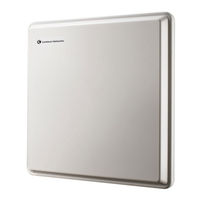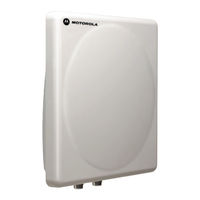Motorola PTP 600 Series Manuals
Manuals and User Guides for Motorola PTP 600 Series. We have 6 Motorola PTP 600 Series manuals available for free PDF download: User Manual, Deployment Manual
Motorola PTP 600 Series User Manual (563 pages)
PTP 600 series
Brand: Motorola
|
Category: Network Router
|
Size: 7.7 MB
Table of Contents
-
-
-
-
Purpose33
-
-
-
Overview44
-
-
-
-
Mimo71
-
Security73
-
Region Codes73
-
PTP Networks74
-
Fips 140-298
-
FIPS 140-2 Mode100
-
-
-
Site Planning108
-
Link Planning112
-
-
Standards116
-
-
-
-
-
-
Definitions148
-
Grant of License148
-
Confidentiality150
-
Transfer151
-
Updates151
-
Maintenance151
-
Disclaimer152
-
U.S. Government153
-
Term of License153
-
Governing Law153
-
Assignment153
-
Entire Agreement154
-
-
Advertisement
Motorola PTP 600 Series User Manual (344 pages)
POINT-TO-POINT WIRELESS SOLUTIONS
Brand: Motorola
|
Category: Network Router
|
Size: 4.07 MB
Table of Contents
-
-
-
-
Introduction79
-
Color Codes82
-
Distance82
-
-
Definitions85
-
Mode94
-
7 Installation
101-
Preparation101
-
Tools Required102
-
Legal Disclaimer102
-
Connecting up105
-
Powering up115
-
-
8 Web
119-
Histogram Data131
-
Statistics Page146
-
Install152
-
Disarm167
-
Software Upgrade170
-
Barring Channels179
-
Diagnostics194
-
License Key197
-
Properties199
-
Reboot200
-
9 Recovery Mode
201-
Reboot209
-
-
Overview210
-
-
-
Power LED Is off228
-
Test Radio Link233
-
No Activity233
-
Some Activity233
-
12 Wind Loading
234 -
-
Scope236
-
Hardware236
-
Antenna236
-
Status Page237
-
Configuration238
-
Installation239
-
Link Budget242
-
Antenna Choices243
-
Installation251
-
Antenna Choice251
-
Tools251
-
-
-
Introduction258
-
-
-
Overview277
-
-
-
Russia307
-
UK Notification310
-
Exposure313
-
Legal Notices314
-
Definitions314
-
Grant of License314
-
Confidentiality316
-
Transfer317
-
Updates317
-
Maintenance317
-
Disclaimer318
-
Government319
-
Term of License319
-
Governing Law319
-
Assignment319
-
Entire Agreement320
-
-
Management331
-
Physical332
-
Powering332
-
21 Faqs
340 -
22 Glossary
342 -
23 Index
343
Motorola PTP 600 Series User Manual (250 pages)
Point-to-Point Wireless Bridges
Brand: Motorola
|
Category: Wireless Access Point
|
Size: 3.42 MB
Table of Contents
-
-
-
Region Codes42
-
Distance46
-
-
-
Preparation52
-
Powering up65
-
-
8 Web
68-
Install102
-
Disarm114
-
Software Upgrade117
-
Barring Channels126
-
Diagnostics139
-
License Key143
-
Properties145
-
Reboot146
Advertisement
Motorola PTP 600 Series User Manual (242 pages)
POINT-TO-POINT WIRELESS BRIDGE
Brand: Motorola
|
Category: Wireless Access Point
|
Size: 3.21 MB
Table of Contents
-
-
-
Region Codes41
-
Distance46
-
-
-
Preparation52
-
Powering up64
-
-
8 Web
67-
Install100
-
Install Pages100
-
Disarm112
-
Software Upgrade115
-
Barring Channels124
-
Diagnostics137
-
License Key141
-
Properties143
-
Reboot144
Motorola PTP 600 Series Deployment Manual (23 pages)
Brand: Motorola
|
Category: Network Hardware
|
Size: 0.52 MB
Table of Contents
Motorola PTP 600 Series User Manual (8 pages)
GPS Synchronization Unit for PTP 600 Series Wireless Ethernet Bridges





